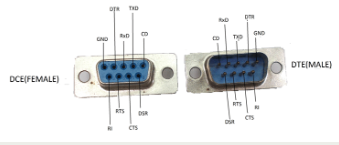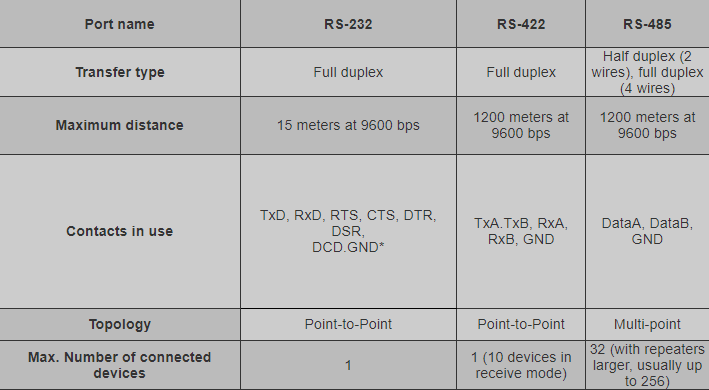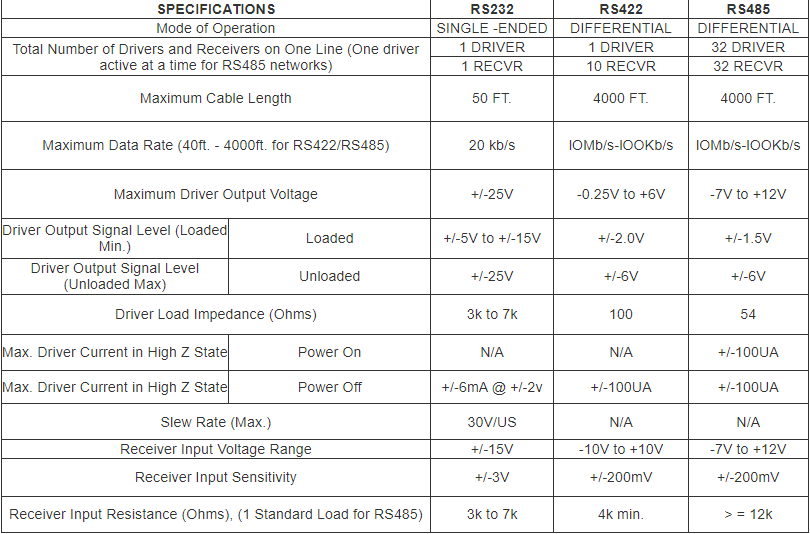RS422, RS485 and RS232 Serial Communications: Which is Better
Hi, friends, this post will introduce RS422, RS485 and RS232 Serial Communications: which is better?
Understanding the differences between these two can be difficult, and it doesn't help that RS-422 is often confused with the RS-485.
To better understand these protocols, here's a introduction and distinction of all three:

What is Electronic Communication?
RS422 Overview
RS485 Overview
RS232 Overview
RS422 vs RS485 vs RS232 Features
The Interfaces for RS422, RS485 and RS232
The Protocols for RS422, RS485 and RS232
The Specifications for RS422, RS485 and RS232
Applications for RS422, RS485 and RS232
Parts with Similar Specs
Datasheet PDF
Conclusion
What is electronic communication?
The exchange of information, thoughts, data or messages using methods is known as communication or digital communication. Electronic communication encompasses a range of techniques, including email, instant messaging, text messaging, online chat rooms and forums social media platforms, like Twitter and Facebook well as video conferencing tools such, as Skype and Zoom.
It's no secret that electronic communication has grown in popularity over the last few decades due to its convenience and low cost. However, every digital transaction offers security concerns to enterprises, especially when sensitive and protected data is involved.Electronic communication is an essential element of modern life, and understanding the various varieties accessible allows you to make informed decisions about how to best protect yourself.
RS422 Overview
What is RS422?
The full name of the RS-422 standard is "the electrical characteristics of the balanced voltage digital interface circuit," and it describes the interface circuit's characteristics. There are 5 lines in all, including a signal ground. Because the receiver has a large input impedance and the transmission driver has a more critical driving capability than RS232, it can link up to 10 receiving nodes on the same transmission line. The RS-422 protocol provides point-to-multidirectional two-way communication between one master device (Master) and the rest of the slave devices (Slave). Because the slave devices cannot connect with each other, RS-422 supports point-to-multidirectional two-way communication. Because the receiver's input impedance is 4k, the transmitter's maximum load capacity is 10 & Times; 4k + 100 (terminating resistor).
The principles of the RS-422 and RS-485 circuits are the same. They are delivered and received in differential mode, with no need for a digital ground. The primary cause for the extended transmission distance under the same rate condition is differential operation. That is the real difference between RS-422, RS-485, and RS232, because RS232 is a single-ended input and output, while duplex operation requires at least digital ground. Send and accept lines three and four (asynchronous transmission). Other control lines can be added to complete synchronization and other purposes.
RS485 Overview
What is RS485?
When communication distances must range from a few tens of meters to several kilometers, the RS-485 serial bus is extensively utilized. To reject common-mode interference, RS-485 employs balanced transmit and differential receive. In addition to its exceptional sensitivity, the bus transceiver can detect voltages as low as 200mV, allowing it to retrieve the broadcast signal over a kilometer.
RS-485 operates in half-duplex mode, sending just one point at a time. As a result, an enable signal must regulate the transmitting circuit.
RS232 Overview
![7d8f13b1118b82e6af830cc8f5ff4aff.png DD56ESY{KP])N@LA@OEQ9GG](https://www.xinshop.com/upload/image/content/20231009/7d8f13b1118b82e6af830cc8f5ff4aff.png)
What is RS232?
The RS-232 interface adheres to the Electronic Industries Alliance (EIA) interface standard for serial data transfer. EIA-RS-232 (232, RS232 for short) is the initial number. It is frequently used for serial interface peripheral connections on computers. Connect cables as well as mechanical, electrical, signal, and data transmission operations.

The RS-232-C standard specifies data transfer rates of 50, 75, 100, 150, 300, 600, 1200, 2400, 4800, 9600, and 19200 baud per second.
RS422 vs RS485 vs RS232 Features
RS-232
| RS-485
| RS-422
| |
Network Topology
| Point-to-Point
| Point-to-Point or Multidrop
| Point-to-Point or Multidrop
|
Duplex Type
| Full Duplex
| Full Duplex Half Duplex
| Full Duplex Half Duplex .
|
Number of Devices
| 1 controller 1 receiver
| 32 unit loads (controllers or receivers)
| 1 controller 10 receivers
|
Signaling
| Unbalanced
| Balanced (differential signaling)
| Balanced (diferential signaling)
|
Max Distance
| 50 feet at 19.2 Kbps
| 4000 feet at 100 Kbps
| 4000 feet at 100 Kbps
|
Mark (data 1)
| -15 to-3 V
| 1.5 V to5 V(B> A)
| 2Vto6V(B>A)
|
Space (data 0) | +3 to +15V
| 1.5Vto5V(A>B)
| 2Vto6V(A>B) |
The Interfaces for RS422, RS485 and RS232

The Specifications for RS422, RS485 and RS232

Applications for RS422, RS485 and RS232
Parts with Similar Specs
Datasheet PDF
Conclusion
About which is better?

Frequently Asked Questions


















